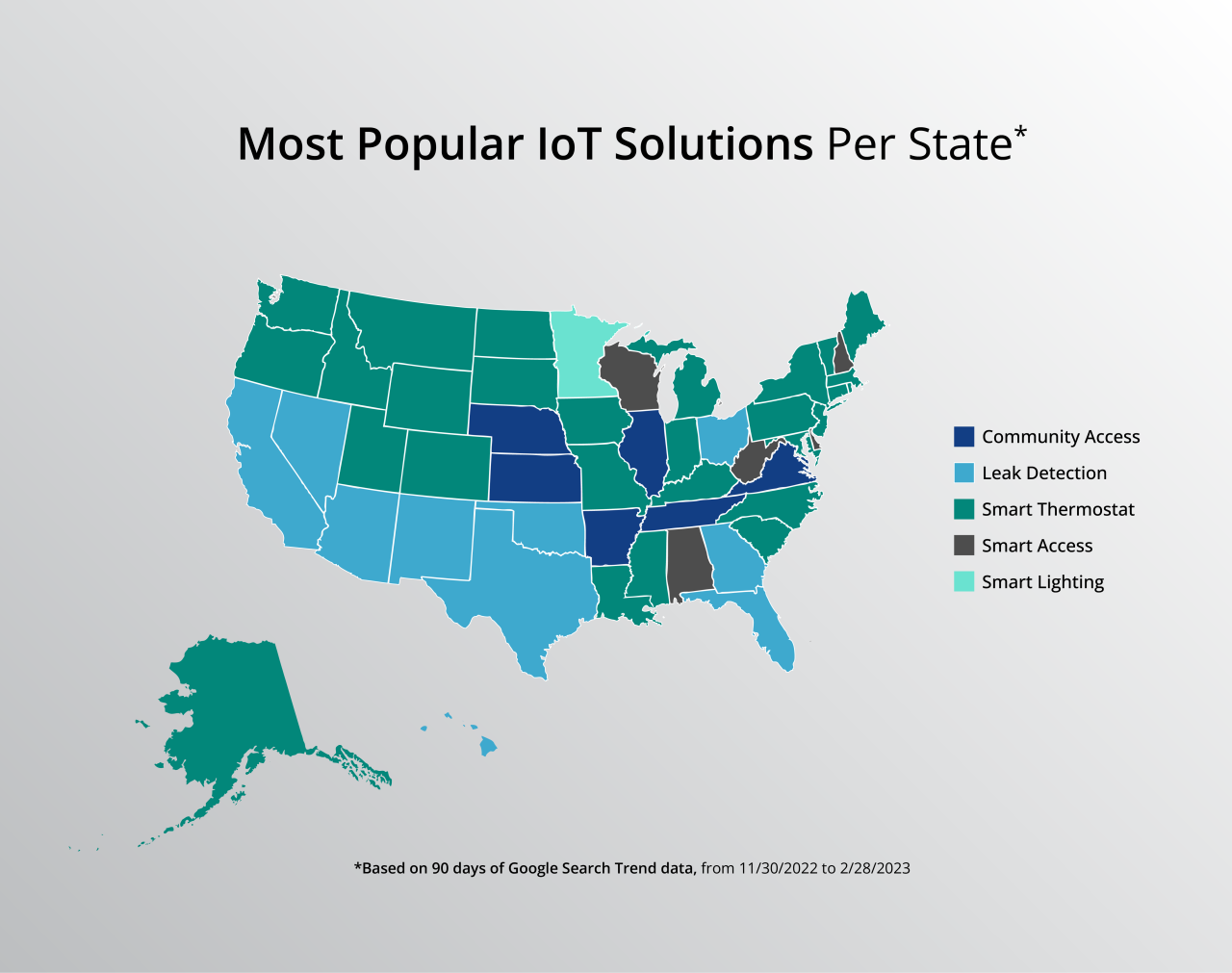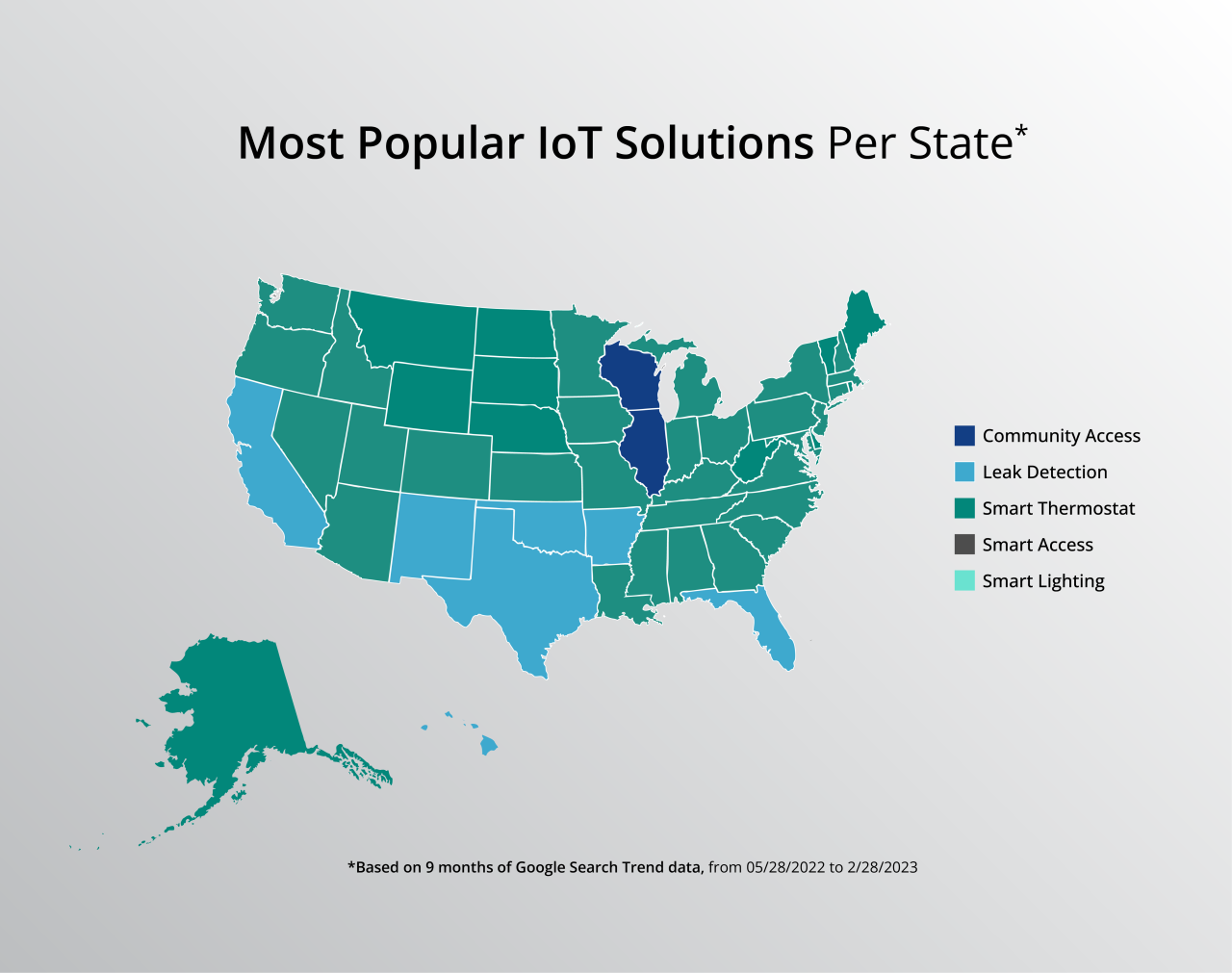Multifamily Blogs
Defining IoT by Community, Not Portfolio
Defining IoT by Community, Not Portfolio
When multifamily owner/operators identify property technologies they believe in, and which show well in pilot trials, they often like to deploy those universal solutions portfolio-wide. There is value in implementing solutions at scale, derived through uniformity and purchasing power. However, the practice of wide-scale deployment of one-size-fits-all solutions makes one tenuous assumption: that all properties will benefit equally.
Many industry suppliers are happy to sell owner/operators on the benefits of blanket solutions. While promises like single-source reporting and portfolio-level Internet of Things (IoT) are enticing, a one-size-fits-all approach to proptech and smart home technology typically fails to optimize the individual performance of each asset. Suppliers capable of tailoring technology to form independent IoT ecosystems for each community enable operators to capture the intrinsic NOI of each asset.
Operators are understandably moving to consolidate their tech stacks, especially after the pandemic-era prevalence of siloed solutions. A solo supplier, with the ability to customize solutions across a portfolio, can still deliver the same single-source visibility and reporting operators crave. Community-specific IoT systems are essential to seamless operations, energy savings, and property protection, but require strict attention to building design, as well as geographic and demographic factors, for effective customization.
- Access Control
Access controls now support everything from self-guided touring to property maintenance and inspections, but smart access hardware comes in several forms. The decision to deploy Bluetooth-based, coded access controls or other locks depends on the average renter age, urban or suburban setting, vendor presence, and desired guest access requirements.
- Smart Thermostats
Smart thermostats enable residents and operators alike to strategically program home and common area climates to minimize energy use. Geographic regions will largely determine the efficacy of such technologies, as markets that experience seasonal cold or hot temperatures include more variables that influence energy savings. Other factors, such as the number of remote workers in the building, will also need to be assessed to determine daytime common area and amenity usage, and optimal climate settings.
- Smart Lighting and Plugs
Like thermostats, smart lighting decisions vary based on several renter demographic traits, amenity types and geographic region. Smart lighting, plugs and thermostats can also help operators to maintain compliance in regions with strict energy use regulations or grid optimization programs. Operators can also deploy smart lighting in common spaces, parking facilities and walkways to help lower insurance premiums.
- Humidity Sensors and Leak Detection
Humidity sensors and leak detection devices offer protection for every asset type, but are must-haves in older buildings and geographic regions where extreme cold has the potential to impact plumbing. Such protections are also advised in high-rise and mid-rise buildings, where upper-level water leaks can potentially impact multiple homes. Operators who implement such devices, which send automated alerts at the first sign of a water issue, can influence the requirements of their insurance policies and contribute to ESG initiatives by reducing water consumption and limiting damage through early detection.
- Parking
Parking management systems — which identify vacant and occupied parking spaces, as well as unauthorized parking — vary based on parking structure, the number of available parking spaces on site and even municipality regulations. Whether communities utilize above- or below-ground parking, assigned or disbursed parking, also determines the parking system features that will be most relevant and useful.
IoT for residents of all agesCommunities with an older resident population, or senior living communities, must cater to their demographic. Residents at those communities may be less inclined to utilize app-controlled smart home features, but operators can still install proptech conveniences to enhance their living experience. For example, residents requiring regular caregiver visits can benefit from smart access controls that empower them to issue and manage guest access credentials remotely.
In contrast, a younger renter population may prefer the ability to micromanage climate controls to optimize their energy use, issue access credentials and manage more aspects of their home environment through their phones.
Not every multifamily building or resident demographic is the same, and residential properties are best served when technology is strategically deployed to address the specific needs of the community. On-site teams can better manage, facilitate and dial in the proptech and smart home solutions in place at their respective communities when the technology is connected and linked through a community-specific IoT hub. One size does not fit all in the apartment industry, and suppliers willing to work with operators to tailor technology solutions by community and create an effective IoT are helping to drive portfolio performance one asset at a time.




